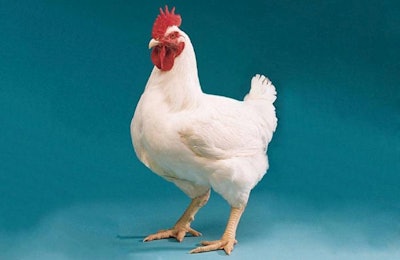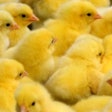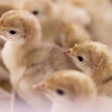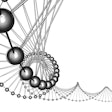
In the developed world, the broiler and layer industries find themselves in an unusual situation. Performance measures for livability, growth rate, feed conversion, and carcass and slaughter yield have never been better for broilers, and the same is true for persistency of lay, livability and feed conversion for layers. But, because of activist group activities and consumers in the developed world’s heightened interest in animal welfare and transparency, poultry producers are being challenged to manage their flocks so they are productive and presentable for a photoshoot throughout their lives.
Selecting layers in varied environments
Fortunately, poultry breeding companies recognized these consumer and activist trends years ago and began adapting their selection programs to produce genetic stock that is adaptable to multiple housing situations, has improved performance on bird welfare measures, and continues to be more productive with each generation. The movement out of cages for laying hens started in Europe, but it is spreading rapidly to North America. Laying hen strains have proven adaptable to cage-free environments because breeders began adding cage-free environments for their selection lines more than 20 years ago.
Frans van Sambeek, research and development director, ISA, said selection for the important cage-free behavioral traits like nesting behavior and lower aggressiveness won’t really slow progress on economically important traits like persistency of lay or egg size and quality, because this balanced approach to selecting breeder candidates is being helped by genomic techniques.
Santiago Avendano, senior geneticist, Aviagen, explained: “Genomics is especially important for attributes for which there is a limited amount of individual records at the time of selection, like sex-limited traits. For instance, in the past we have been able to make a prediction of the genetic potential for egg production or hatchability of a male selection candidate based on the qualities of its family, but with genomics we can now see exactly the genetic configuration of each selection candidate and use it for predicting its genetic potential more accurately.”
Feather coverage
Feather coverage on laying hens provides an example of where what might be thought of as a welfare trait has actually proven to be a trait that is of increasing economic performance.
“Selecting for feathering is an important trait from a feed efficiency point of view so that hens are not overeating (to maintain body temperature), but it is also important from a consumer and society point of view because in free range or in aviaries, consumers want to see the welfare of the birds,” said van Sambeek.
Cage-free houses provide more space per hen and this makes temperature control in the layer house more of an issue in the winter months, so better feather coverage can save on feed and fuel costs.
Preparing for beak-trimming bans
Dr. Neil O’Sullivan, research director, Hy-Line International, said the company discontinued beak trimming selection candidates more than 20 years ago. He said they didn’t document beak shape when they first started selecting non-beak trimmed birds, but he said that their perception is that beak shape might have changed slightly. However, the big change has been in the bird’s behavior.
“Now it is the decision of the farm management to beak treat,” O’Sullivan said. “If birds are in open-sided houses, they probably need to be beak trimmed, but you don’t have to otherwise.”
Finding solutions to breast meat myopathies
Breeders have been quite successful in increasing the breast meat yield of broilers. In some markets, particularly in the U.S., birds raised for deboning are routinely processed at 9 pounds (4.1 kilograms) live weight or more. Along with these larger birds, processors are seeing increases in white striping and woody breast muscle myopathies.
All breeders report gathering information on several meat quality traits in birds at processing to gather information on individual birds and families.
Dr. Derek Emmerson, vice president-research and development, Aviagen said: “These are combined with indirect measures on selection candidates to identify birds with the condition while they are still alive and provide a very accurate way to identify which individuals are developing wooden breast. We have also increased our emphasis on traits such as cardiopulmonary function to provide a better physiological foundation to support improved meat quality and reduce the impact of one of the important risk factors for meat quality, namely, hypoxia or tissue ischemia.”
The root causes of these muscle myopathies is not fully understood, but researchers are actively looking for solutions.
Dr. Mitch Abrahamsen, senior vice president of research and development, Cobb-Vantress, said: “Cobb currently works with researchers on three different continents to find solutions, both short term and long term, to meat quality issues that are seen in the industry.”
Selecting the broiler of tomorrow
Given all the considerations of selecting for welfare traits and efficiency, breeders were asked if birds raised for deboning would continue to get larger in the future.
Yves Jego, director of research and development, Hubbard, said: “There might be a physiological limit or at least a physiological optimum, which most likely has not been reached yet. It is not just a matter of what the physiological limit will be, as these kind of extremely heavy broilers need to be grown under completely different management (growth profile, feed, lighting, housing, density, etc.) to get the maximum saleable final product.”
“Short term – Yes. Long term – It depends,” Abrahamsen said. “There are metabolic limits that have been reached at some of the heavier weights, but we had similar issues with ascites in the past. The integrations learned how to manage or limit the issues, while the breeding companies worked on identifying families that were healthier. These same principles apply to metabolic challenges that are faced today at heavier weights or faster growth rates.”
“Selection for welfare traits including leg strength, gait, foot pad integrity and cardiopulmonary health provides a better physiological foundation to support field livability and bird welfare,” Emmerson said. “In addition, pedigree lines are selected across a range of different environments including drug-free production with exposure to common enteric challenges. This has allowed us to develop breeds which are adapted to processing at higher weights and under antibiotic-free conditions.”
“The real question of the upper limit for deboning birds is a broader one and will be determined by a number of different factors e.g., market factors, product use and consumer acceptance.”
Will genome editing be accepted in poultry?
Genome editing is the process where the native genome of an organism is precisely corrected or adjusted. This technique is beginning to be used in human medicine where the patient’s genome is precisely manipulated to achieve a therapeutic effect. In contrast, genetically modified organisms (GMOs) have had transgenic introduction of foreign DNA sequences, which is different from genome editing where no foreign DNA is introduced into the organism’s genome.
The poultry geneticists interviewed for this article all cited genome editing as a technology with potential to affect genetic selection and breeding in the future, but they stressed that it is uncertain whether consumers and society will make a distinction between genome editing and genetically modified organisms when it comes to food-producing animals. Genome editing has not been employed in poultry at this time.
You’ll also learn about:
This is the first article in WATT Global Media’s 100-year anniversary series, which looks at key drivers that will shape the future of the worldwide poultry industry. The next article in the series will explore how innovations in seed technology will benefit the poultry industry.


















